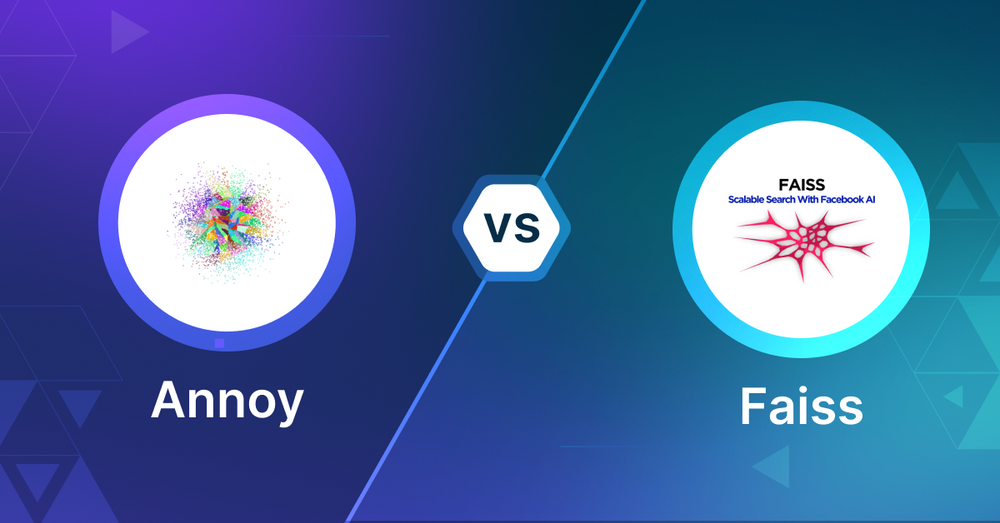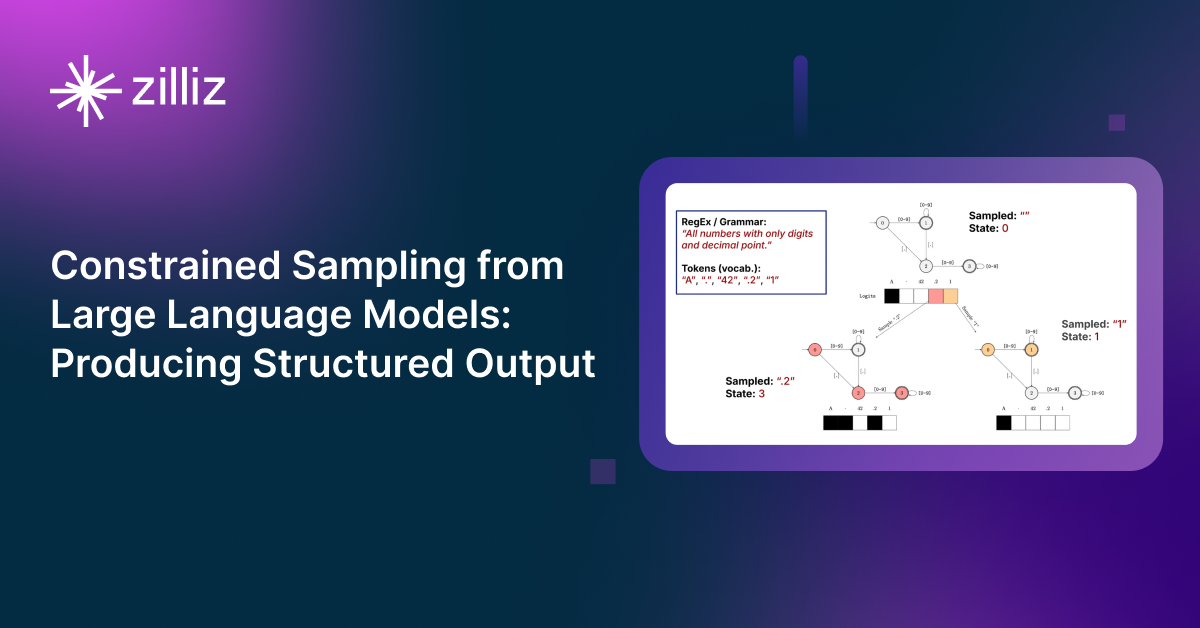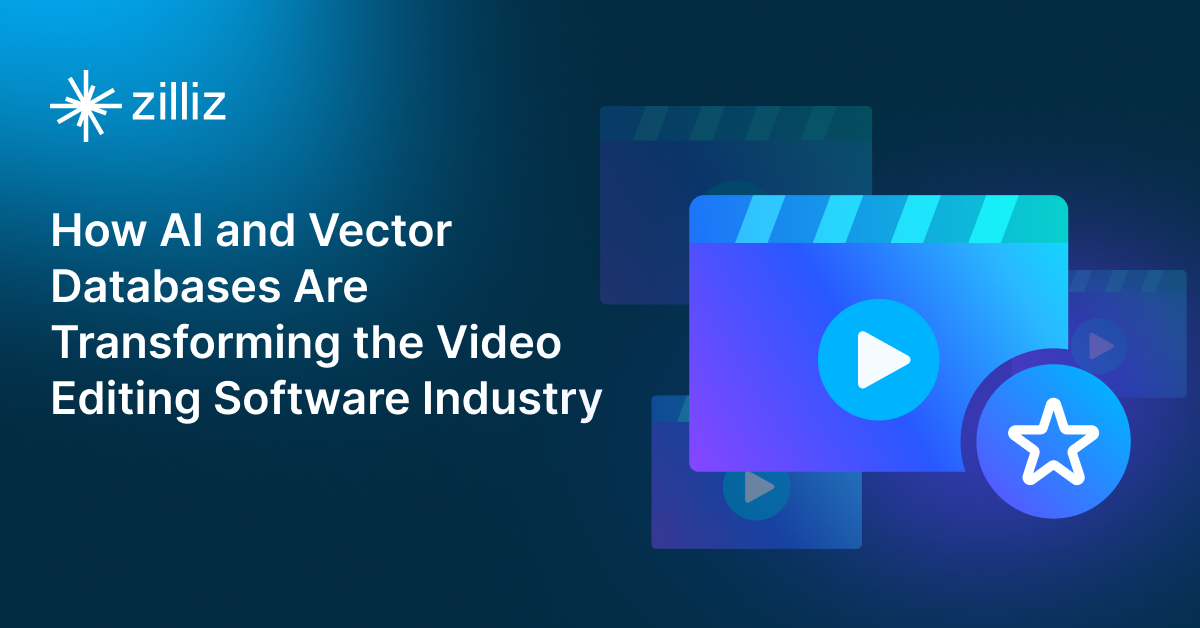Annoy vs Faiss: Choosing the Right Tool for Vector Search

In today's AI-driven world, efficient vector search is essential for applications that involve high-dimensional data, such as natural language processing (NLP), semantic search, or image retrieval. Two powerful vector search tools, Annoy and Faiss, are popular in this space, but choosing between them can be challenging. Both offer valuable capabilities, yet their strengths and use cases differ significantly. In this blog, we’ll explore what each technology offers and help you decide which one is best suited to your needs.
What Is Vector Search?
Before diving into the comparison, it's helpful to clarify what vector search is. Vector search, or vector similarity search, is the process of finding the most similar items in a dataset, represented as high-dimensional vectors. These vectors are often generated by machine learning models to capture the essence of the unstructured data (e.g., the meaning of a sentence or the features of an image).
Unlike traditional databases, where searches are based on exact matches or filtering, vector search focuses on similarity. The goal is to find vectors that are "close" to each other based on a distance metric (such as Euclidean distance or cosine similarity). Vector searches are widely adopted in many use cases and applications, such as production recommendation, natural language processing (NLP), image similarity search, and retrieval augmented generation (RAG).
There are many solutions available on the market for performing vector searches, including:
- Vector search libraries such as Faiss and Annoy.
- Purpose-built vector databases such as Milvus, Zilliz Cloud (fully managed Milvus)
- Lightweight vector databases such as Chroma and Milvus Lite.
- Traditional databases with vector search add-ons
Annoy: Speed and Simplicity for Static Data
Annoy (Approximate Nearest Neighbors Oh Yeah) is an open-source library developed by Spotify that is designed for efficient approximate nearest-neighbor (ANN) search in high-dimensional spaces. Its primary function is to quickly find items that are similar to a given query item, based on vector embeddings. Annoy is particularly useful when working with large datasets where exact matches aren't as important as quickly finding "close enough" results. Based on user preferences, it is often used to build recommendation engines that suggest similar items (like songs, products, or videos).
Key Features of Annoy:
- Approximate Nearest-Neighbor Search: Annoy uses a method based on random projection trees, which allows for fast searching but trades off some accuracy for speed. This method makes it suitable for applications where speed is critical and exact results aren't necessary.
- Memory Efficiency: Annoy is optimized to work efficiently with memory. It allows you to build the index in memory and store it on disk, making it possible to handle large datasets even if you don't have enough RAM. This feature is particularly useful if your system's memory is a constraint.
- Immutable Indexes: Once an index is built in Annoy, it cannot be modified. If the dataset changes, you’ll need to rebuild the entire index. This makes it a good choice for static datasets, where data doesn't change frequently.
- Disk-Backed Storage: Annoy can store indices on disk, meaning you can query large datasets without keeping everything in memory, which is useful when handling very large data.
- Language Support: Annoy is primarily used in Python but is written in C++ for performance reasons.
Annoy is widely praised for its simplicity, speed, and ease of use, especially for developers needing a fast static data search tool.
Faiss: Power and Flexibility for Large-Scale AI
Faiss (Facebook AI Similarity Search) is an open-source library developed by Meta (formerly Facebook) that provides highly efficient tools for fast similarity search and clustering of dense vectors. Faiss is designed for large-scale nearest-neighbor search and can handle both approximate and exact searches in high-dimensional vector spaces. Faiss is designed to handle enormous datasets and stands out for its ability to leverage GPU acceleration, providing a major boost in performance for large-scale applications. It is particularly well-suited for AI and machine learning applications.
Key Features of Faiss:
- Approximate and Exact K-Nearest-Neighbor Search (ANN & KNN): Faiss supports both approximate and exact nearest-neighbor (NN) searches. It allows you to trade off between speed and accuracy depending on your application's specific needs.
- GPU Acceleration: One of Faiss's standout features is its support for GPU acceleration. This allows it to scale effectively to large datasets and perform searches faster than CPU-only methods.
- Large Dataset Handling: Faiss is optimized for handling datasets that are too large to fit into memory. It uses various indexing techniques, such as inverted files and clustering, to organize data efficiently and perform searches on huge collections.
- Multiple Indexing Strategies: Faiss supports various methods for indexing vectors, such as flat (brute-force) indexing, product quantization, and hierarchical clustering. This provides flexibility in how searches are performed, depending on whether speed or accuracy is more important.
- Support for Distributed Systems: Faiss can perform searches across multiple machines in distributed systems, making it scalable for enterprise-level applications.
- Integration with Machine Learning Frameworks: Faiss integrates well with other machine learning frameworks, such as PyTorch and TensorFlow, making it easier to embed into AI workflows.
Comparing Annoy and Faiss
When deciding between Annoy and Faiss, several key factors must be considered, including search methodologies, data handling, performance, and scalability.
Annoy uses random projection trees for approximate nearest-neighbor search. Its focus on speed and memory efficiency makes it great for read-heavy workloads, especially where data is static. However, this focus on speed comes at the cost of flexibility. Since the index is immutable, it's not ideal for applications that require frequent updates. In contrast, Faiss uses a broader range of search algorithms, from simple k-nearest neighbor searches to more complex clustering techniques. This flexibility allows you to adjust the trade-off between speed and accuracy, and it's especially useful in environments where the dataset is constantly changing.
Faiss also outperforms Annoy in handling dynamic datasets. While Annoy requires a complete rebuild of the index whenever the data changes, Faiss can update its indices incrementally. This feature and its GPU acceleration give Faiss an edge in large-scale, real-time applications where speed and flexibility are essential.
Both tools perform well in terms of scalability, but in different ways. Annoy is optimized for memory efficiency and can handle large datasets efficiently when stored on disk. Still, its lack of support for distributed computing or GPU acceleration limits its ability to scale for truly massive datasets. Faiss, on the other hand, is built with scalability in mind. Its GPU support and distributed architecture make it the better option for large-scale machine learning systems where performance is critical.
When to Choose Annoy
Annoy’s strengths lie in its simplicity and efficiency. It’s the go-to tool for fast, approximate searches on a large dataset that doesn't change often. Its immutability makes it ideal for applications like recommendation engines, where the data remains mostly static, and the need for real-time updates is minimal.
If you’re working on a project where speed is more important than perfect accuracy, and you want a tool that’s easy to set up and memory-efficient, Annoy is a strong choice. It also works well for applications running in memory-constrained environments, as operating efficiently doesn't require huge amounts of RAM.
When to Choose Faiss
Faiss offers far more power and flexibility than Annoy, especially for applications that require high scalability, real-time updates, or a balance between speed and accuracy. If your use case involves GPU-accelerated systems or you're dealing with massive datasets that exceed the available memory, Faiss is the clear winner. Its ability to handle exact and approximate searches, along with multiple indexing options, makes it a versatile tool tailored to specific needs.
Faiss is the right choice if you're developing applications like image retrieval systems, large-scale NLP tasks, or any project requiring high-performance, real-time querying. While it has a steeper learning curve than Annoy, the added complexity comes with significant customization, scalability, and speed benefits.
Comparing vector search libraries and purpose-built vector databases
Both vector search libraries like Annoy and Faiss and purpose-built vector databases like Milvus aim to solve the similarity search problem for high-dimensional vector data, but they are built with different goals in mind. Here's a breakdown of the key differences between the two.
Scope and Purpose
- Vector Search Libraries (Annoy, Faiss, ScaNN, and HNSWlib): These are lightweight libraries designed to be embedded into specific applications for performing nearest-neighbor searches. They focus solely on search algorithms and typically require the developer to manage all other aspects, such as data storage, scalability, and infrastructure.
- Purpose-Built Vector Databases like Milvus and Zilliz Cloud are full-fledged systems built specifically for managing and searching vector data. They provide a more comprehensive solution, including data storage, scaling, indexing, replication, and query management. These systems are designed to handle large-scale production environments where vector search is a core part of the infrastructure.
Feature Set
- Vector Search Libraries: These libraries are limited to performing fast, efficient nearest-neighbor searches. They focus on indexing vectors and providing search functionality but don't include features like data persistence, backups, or monitoring. If you need to dynamically update the dataset, libraries like Annoy might require a full index rebuild, whereas Faiss supports incremental updates but lacks broader management capabilities.
- Purpose-Built Vector Databases: These databases have a full range of database features, including data persistence, horizontal scaling, replication, sharding, and backup/restore functionalities. They are designed for dynamic, large-scale use cases and are easier to manage in a production environment. Some purpose-built vector databases like Milvus also support hybrid searches that combine vector-based search with traditional keyword search.
Scalability
- Vector Search Libraries: While vector search libraries like Faiss offer excellent performance, especially with GPU acceleration, they don't natively support distributed systems. If you need to scale across multiple nodes or machines, you’ll need to manage this manually, which can add complexity. Handling billions of vectors might require a lot of engineering effort to distribute the load across machines, increasing the operation and maintenance costs.
- Purpose-Built Vector Databases: These databases are designed with scalability in mind. Databases like Zilliz Cloud can handle sharding, replication, and distributed indexing out of the box, allowing you to scale effortlessly as your dataset grows. They can manage billions of vectors across a distributed environment, making them ideal for enterprise-level AI applications.
Performance Optimization
- Vector Search Libraries: Libraries like Faiss and Annoy provide direct control over performance optimization. You can choose indexing strategies (e.g., product quantization, random projection trees) and tune algorithms based on the specific requirements of speed vs. accuracy. While this gives you more control, it also requires a deeper understanding of the underlying algorithms.
- Purpose-Built Vector Databases: These databases automate much of the performance optimization process. While you may not have as much control over indexing strategies, the systems handle query speed, data distribution, and memory management optimizations. If performance is critical and you want to offload the complexity of tuning the system, a vector database is a better option.
Ease of Use and Setup
- Vector Search Libraries: Setting up vector search libraries requires more manual effort. You'll need to handle data storage, infrastructure, indexing, and scaling. While libraries like Annoy and Faiss are relatively easy to use for small projects, scaling them for production use involves managing the surrounding infrastructure, like storage and load balancing, yourself.
- Purpose-Built Vector Databases: These databases are designed to be easier to set up for production environments. Managed solutions like Pinecone allow you to focus on building your application without worrying about the underlying infrastructure. These systems also come with built-in features for data management, making them easier to deploy and scale.
Cost Considerations
- Vector Search Libraries: Since these libraries are lightweight and require minimal setup, they tend to have lower upfront costs, especially if you have a small, static dataset. However, the long-term cost may rise if you need to scale the system or handle dynamic datasets, as you'll need to manage the infrastructure and engineering resources.
- Purpose-Built Vector Databases: Managed vector databases like Zilliz Cloud can be more expensive due to the operational overhead they eliminate. However, they offer substantial long-term benefits regarding ease of use, scalability, and maintenance. If you’re working on an enterprise application with large-scale vector search requirements, the cost of using a managed service is often justified by the time saved in management and infrastructure setup.
When to Choose Each Vector Search Solution
Choose Vector Search Libraries if:
- You have a small to medium-sized, relatively static dataset.
- You prefer full control over indexing and search algorithms.
- You're embedding search in an existing system and can manage the infrastructure.
Choose Purpose-Built Vector Databases if:
- You need to scale to billions of vectors across distributed systems.
- Your dataset changes frequently, requiring real-time updates.
- You prefer managed solutions that handle storage, scaling, and query optimizations for you.
In summary, choose vector search libraries for flexibility, small-scale applications, and vector databases for ease of use and large-scale production environments.
Evaluating and Comparing Different Vector Search Solutions
OK, now we've learned the difference between different vector search solutions. The following questions are: how do you ensure your search algorithm returns accurate results and does so at lightning speed? How do you evaluate the effectiveness of different ANN algorithms, especially at scale?
To answer these questions, we need a benchmarking tool. Many such tools are available, and two emerge as the most efficient: ANN benchmarks and VectorDBBench.
ANN benchmarks
ANN Benchmarks (Approximate Nearest Neighbor Benchmarks) is an open-source project designed to evaluate and compare the performance of various approximate nearest neighbor (ANN) algorithms. It provides a standardized framework for benchmarking different algorithms on tasks such as high-dimensional vector search, allowing developers and researchers to measure metrics like search speed, accuracy, and memory usage across various datasets. By using ANN-Benchmarks, you can assess the trade-offs between speed and precision for algorithms like those found in libraries such as Faiss, Annoy, HNSWlib, and others, making it a valuable tool for understanding which algorithms perform best for specific applications.
ANN Benchmarks GitHub repository: https://github.com/erikbern/ann-benchmarks
ANN Benchmarks Website: https://ann-benchmarks.com/
VectorDBBench
VectorDBBench is an open-source benchmarking tool designed for users who require high-performance data storage and retrieval systems, particularly vector databases. This tool allows users to test and compare the performance of different vector database systems such as Milvus and Zilliz Cloud (the managed Milvus) using their own datasets, and determine the most suitable one for their use cases. VectorDBBench is written in Python and licensed under the MIT open-source license, meaning anyone can freely use, modify, and distribute it.
VectorDBBench GitHub repository: https://github.com/zilliztech/VectorDBBench
Take a quick look at the performance of mainstream vector databases on the VectorDBBench Leaderboard.
Techniques & Insights on VectorDB Evaluation:
Further Resources about VectorDB, GenAI, and ML
- What Is Vector Search?
- Annoy: Speed and Simplicity for Static Data
- Faiss: Power and Flexibility for Large-Scale AI
- Comparing Annoy and Faiss
- When to Choose Annoy
- When to Choose Faiss
- Comparing vector search libraries and purpose-built vector databases
- Evaluating and Comparing Different Vector Search Solutions
- Further Resources about VectorDB, GenAI, and ML
Content
Start Free, Scale Easily
Try the fully-managed vector database built for your GenAI applications.
Try Zilliz Cloud for FreeKeep Reading

Zilliz Cloud BYOC Upgrades: Bring Enterprise-Grade Security, Networking Isolation, and More
Discover how Zilliz Cloud BYOC brings enterprise-grade security, networking isolation, and infrastructure automation to vector database deployments in AWS

Producing Structured Outputs from LLMs with Constrained Sampling
Discuss the role of semantic search in processing unstructured data, how finite state machines enable reliable generation, and practical implementations using modern tools for structured outputs from LLMs.

AI Video Editing Software: Revolutionizing Video Tech Through Intelligent Search and Automation
Learn how to build AI-powered video editing tools using CLIP, ResNet, and vector databases. Discover implementation steps for intelligent search, automated tagging, and scalable video processing.
The Definitive Guide to Choosing a Vector Database
Overwhelmed by all the options? Learn key features to look for & how to evaluate with your own data. Choose with confidence.